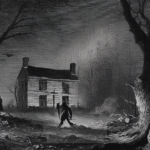What Are the Mysteries Behind the Tunguska Event of 1908?
What Are the Mysteries Behind the Tunguska Event of 1908?
The Tunguska event, which occurred on June 30, 1908, in Siberia, Russia, remains one of the most fascinating scientific anomalies in modern history. This massive explosion, estimated to have released energy equivalent to 10-15 megatons of TNT, flattened approximately 2,000 square kilometers of forest but left no impact crater. The event has puzzled scientists for over a century, raising questions about its cause and implications for our understanding of cosmic events. This blog post delves into the intricacies of the Tunguska event and explores why it remains a compelling mystery in the field of science.
Historical Context of the Tunguska Event
The Tunguska event is often referred to as the most significant extraterrestrial impact in recorded history, yet it was not fully investigated until decades later. Early reports from local residents described a bright flash and a tremendous boom, similar to a massive explosion. Scientists initially speculated that a meteorite or comet could have caused the event, but it wasn’t until the Soviet expedition in 1927, led by Leonid Kulik, that a systematic investigation was conducted. Kulik’s team found a vast area of scorched trees, but no physical evidence of a meteorite or comet impact, leading to further theories about the event’s cause.
Core Concepts: What Happened on That Fateful Day?
On the morning of June 30, 1908, witnesses described a fireball streaking across the sky, followed by a series of explosions that knocked people off their feet and shattered windows over 100 miles away. The blast resulted in the destruction of nearly 80 million trees, and the energy released was estimated to be about 1,000 times more powerful than the atomic bomb dropped on Hiroshima. Scientists believe that a celestial object, likely a small comet or asteroid, exploded in the atmosphere, causing the devastation observed.
Scientific Theories and Explanations
Various theories have been proposed to explain the Tunguska event, ranging from the conventional to the highly speculative. The leading hypothesis suggests that a comet or asteroid entered Earth’s atmosphere at a shallow angle, causing it to explode in mid-air. This aerial explosion would have released a massive amount of energy, sufficient to flatten forests and cause the observed phenomena.
Another intriguing theory posits that the event might have been caused by a miniature black hole passing through the Earth’s atmosphere. While this idea is captivating, it lacks substantial evidence and has been largely dismissed by the scientific community. Furthermore, some researchers have even considered the possibility of a nuclear explosion, though this theory is highly unlikely given the historical context.
Real-World Examples and Comparisons
To grasp the scale and impact of the Tunguska event, it is useful to compare it with other historical incidents involving cosmic objects. The Chelyabinsk meteor, which exploded over Russia in 2013, serves as a modern example. Although the Chelyabinsk event was far smaller, it demonstrated the potential for celestial objects to cause significant damage. Here’s a comparative analysis:
| Event | Date | Location | Energy Released | Effects |
|---|---|---|---|---|
| Tunguska | June 30, 1908 | Siberia, Russia | 10-15 megatons | Flattened 2,000 sq km of forest |
| Chelyabinsk | February 15, 2013 | Chelyabinsk, Russia | 0.5-1 megaton | Windows shattered; injuries from glass |
Practical Implications of the Tunguska Event
The Tunguska event highlights the potential threat posed by near-Earth objects (NEOs). The impact of a celestial object, even one as small as the one believed to have caused Tunguska, can have catastrophic consequences. This understanding has led to increased funding and interest in planetary defense initiatives, such as NASA’s Near-Earth Object Observations program, which aims to track and mitigate potential threats from asteroids and comets.
Alternative Perspectives on the Event
While the scientific community largely agrees on the cosmic impact theory, alternative perspectives abound. Some fringe theories suggest supernatural explanations, such as alien technology or secret government experiments. These theories, while lacking empirical support, illustrate the human tendency to seek extraordinary explanations for unexplained phenomena.
One such theory proposes that the event was the result of an underground nuclear test, despite the fact that such technology did not exist in 1908. Others have speculated about the involvement of ancient civilizations or extraterrestrial beings. While these views are not supported by scientific evidence, they demonstrate the cultural impact of the Tunguska event and its ability to inspire speculation and intrigue.
Common Misconceptions and Clarifications
There are various misconceptions surrounding the Tunguska event that need clarification. One common myth is that it was a meteorite impact, which implies a direct collision with the Earth. In reality, the object is believed to have exploded in the atmosphere, preventing the formation of a crater.
Another misconception is that the event was widely known at the time. In truth, it went largely unnoticed outside of Siberia for many years, with the first significant investigations occurring decades later. The Tunguska event serves as a reminder of how scientific understanding can evolve and how early interpretations may not capture the full scope of an event.
Best Practices for Investigation and Study
Investigating anomalies like the Tunguska event requires a combination of historical research, field studies, and advanced scientific techniques. Here are some best practices for those looking to study such events:
- Gather Eyewitness Accounts: Collect testimonies from individuals who experienced the event, as these can provide valuable insights and contextual information.
- Conduct Field Research: Investigate the site of the event for physical evidence, including geological and botanical studies to understand the impact on the environment.
- Utilize Technology: Employ modern technology such as satellite imagery and geophysical methods to analyze the area and gather data.
- Collaborate Across Disciplines: Work with experts in various fields, including astronomy, geology, and history, to gain a comprehensive understanding of the event.
Future Developments and Ongoing Research
Research into the Tunguska event continues, with ongoing studies focusing on potential links to similar cosmic phenomena. Scientists are also examining historical records of other unexplained events to identify patterns or correlations. Advances in technology, such as improved detection methods for near-Earth objects, are crucial for understanding and potentially preventing future occurrences.
Additionally, public interest in asteroid impacts has surged, leading to initiatives aimed at educating communities about the risks and promoting planetary defense strategies. The Tunguska event serves as a case study for future research and preparedness efforts.
Conclusion: The Enduring Enigma of Tunguska
The Tunguska event remains an enduring mystery in the realm of scientific anomalies, captivating researchers and enthusiasts alike. Despite over a century of investigation, it continues to provoke questions about cosmic events and their potential impact on Earth. Understanding this event not only sheds light on the past but also informs our approach to future threats from the cosmos. As research progresses, we may uncover more about this incredible event, but for now, it stands as a testament to the mysteries of our universe.
Other Articles
What Lies Behind the Haunting of the Winchester Mystery House?
Recent Posts
- What Happened to Flight MH370? The Conspiracy Theories That Still Haunt Us
- What Secrets Lurk Within the Walls of the Infamous Trans-Allegheny Lunatic Asylum?
- What Evidence Supports the Existence of Bigfoot in the Pacific Northwest?
- What Happened to the Indus Valley Civilization? Unraveling the Mysteries of Ancient Urban Life
- Can Telepathy Be Scientifically Proven Through Laboratory Evidence?







